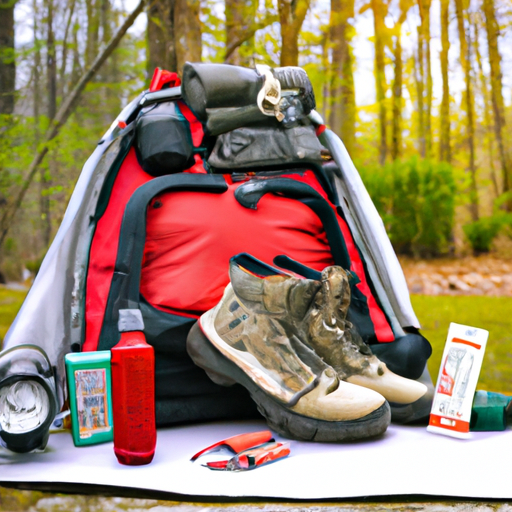Imagine you're out in the wild, miles from civilization, under a star-studded sky. You've got your four-wheel drive and a rooftop tent that's waiting to be mounted – your ticket to absolute freedom.
But, how do you get it up there? Well, don't worry because we've got you covered. This comprehensive guide will take you through all the steps needed for mounting your roof top tent safely and securely.
We'll cover everything from understanding the basics of rooftop tents, taking necessary safety precautions before installation, purchasing the right equipment to assembling and mounting the tent on your roof rack.
We'll also give you some insider tips on using your rooftop tent effectively based on years of outdoor experience.
By following this guide meticulously, not only will you ensure a safe setup but also add an extra layer of adventure to your trips with ease and confidence.
So let's dive in and start exploring!
Key Takeaways
- Understand the basics of rooftop tents: soft top vs. hardshell
- Check vehicle weight limitations and roof rack condition for safe mounting
- Purchase necessary equipment and assemble the tent according to instructions
- Ensure secure installation and regular maintenance for durability and safety
Understanding the Basics of Rooftop Tents
Before you get started on mounting your rooftop tent, it's essential to understand the basics – picture yourself under the stars, comfortably nestled in a sturdy tent perched atop your vehicle. You're not just buying a piece of outdoor equipment; you're investing in experiences and memories. Now that's freedom.
Let's talk about Tent Types first. There are two main styles: soft top and hardshell. Soft tops are more affordable and offer more space but lack the rugged durability of their counterparts. Hardshells, however, are sturdier, quicker to set up, and provide superior insulation – but all this comes at a higher cost.
Then there are Budget Considerations. Remember, you're not just paying for the tent itself but also for potential modifications to your vehicle's roof rack system to accommodate the added weight and size. Don't let sticker shock deter you; remember to factor in longevity and comfort when weighing costs versus benefits.
It's vital that before setting out on any adventure, we arm ourselves with knowledge and make informed decisions based on our needs. So go ahead – dream big, plan well, then hit the road with confidence knowing you've made an investment in freedom and unforgettable experiences!
Safety Precautions Before Mounting
Before you mount your rooftop tent, it's vital to consider a few safety precautions.
Firstly, understand the weight limitations of your vehicle – exceeding these could lead to disastrous outcomes.
Moreover, thoroughly check the condition of your roof rack; any signs of wear or damage can compromise the stability and safety of your setup.
Weight Limitations of Your Vehicle
You've got to be mindful of your vehicle's weight restrictions, or you'll find yourself in a pickle faster than a squirrel up a tree. Vehicle durability and load capacity are key factors that will determine the success of your rooftop tenting adventure.
Always remember, every vehicle has its limit and pushing beyond it can cause serious damage. Consult your car manual to understand the maximum load capacity of your roof rack. This includes the weight of the tent plus gear and occupants. Never exceed this limit as it can strain your vehicle's suspension system, degrade its performance, or worse, lead to accidents.
Ensure your chosen rooftop tent doesn't surpass half of your vehicle's total load capacity for optimal safety and longevity. Trust me; this one move will keep you from turning an exciting outdoor escapade into a car repair nightmare.
Checking the Condition of Your Roof Rack
Keeping your rig in tip-top shape isn't just about adhering to weight limits. It's also crucial to regularly check out the condition of that trusty rack holding your gear aloft. Rack maintenance is paramount for safe and smooth journeys.
Don't just give it a cursory glance; inspect each connection point, tighten any loose bolts or screws, and replace worn-out parts promptly.
One important aspect often overlooked is rack compatibility with your rooftop tent. Make sure the brand and model of both the rack and tent match perfectly. It's not worth risking safety or damaging either component due to improper fit.
Remember, freedom on the open road demands responsibility. Regular checking, proper maintenance, and ensuring compatibility will ensure many happy camping trips atop your vehicle!
Purchasing the Necessary Equipment
It's crucial to ensure that you've got all the necessary equipment before you start mounting your rooftop tent. There are several factors to consider when buying equipment for a rooftop tent, such as tent durability and budget considerations.
To help streamline this process, here's a list of essential items you'll need:
- A Roof Top Tent:
- Look for one with excellent durability to withstand different weather conditions.
- Consider your budget; while high-quality tents can be costly, they often offer better longevity and comfort.
- Mounting Hardware:
- The kit should include nuts, bolts, and brackets appropriate for your roof rack's design.
- Ensure it's sturdy enough to secure your tent firmly.
- Ladder:
- Most rooftop tents come with a ladder, but if not, remember to purchase one separately.
When purchasing these items, think about how they'll contribute to maximizing your outdoor experience. It's not just about getting from point A to point B; it's also about enjoying the journey in between.
Before proceeding further into the installation process, double-check that all equipment is accounted for. Missing even a single piece of hardware can lead to complications down the line or compromise safety during use. Remember – preparedness breeds confidence and freedom on the road!
Assembling the Tent
Now that you've got all your equipment ready, it's time to delve into the actual assembly of your roof top tent. Always start by thoroughly reading the manufacturer's instructions – they'll provide specific steps tailored to your particular model.
Once you have a clear understanding, prepare your tent for mounting, ensuring everything is clean and dry; this can drastically improve both the ease of installation and long-term durability.
Reading the Manufacturer's Instructions
Before anything else, you'll want to thoroughly peruse the manufacturer's instructions that come with your roof top tent, envisioning each step as if you're performing a well-choreographed dance atop your vehicle.
This isn't just some random accessory; it's your portable shelter, your sanctuary under the stars.
Instruction interpretation is crucial here. The manufacturer's guide will often contain specific details like weight limits and recommended mounting procedures that can significantly impact the secure installation of your tent and ultimately influence its longevity.
Don't rush through this process; it's part of the journey towards freedom and independence on the open road.
Remember, there's no shame in asking questions or seeking assistance if something seems unclear within these guidelines. Besides, understanding these instructions fully could be the key to many hassle-free adventures ahead!
Preparing Your Tent for Mounting
Gearing up for your first starlit slumber begins with getting your portable haven ready for its perch. Lay out your tent, and inspect it carefully. Ensure the material doesn't have any tears or punctures that could let in rain or bugs. If you spot any, patch them up pronto.
Now, apply a layer of Tent Waterproofing spray to the tent's exterior. This acts as an extra line of defense against unpredictable weather elements, ensuring you stay dry no matter what Mother Nature throws at you.
Next, consider Campsite Selection. You'll want to place your rooftop tent on solid ground so it won't shift during windy conditions. Look for a flat area free from overhanging branches that could damage your setup.
Remember, preparation is key to enjoying a carefree night under the stars!
Mounting the Tent on the Roof Rack
Once you've secured your roof rack, it's time to position and mount your tent.
Rack selection is crucial; make sure the one you've chosen can support the weight of your tent and occupants without compromising vehicle stability. You're aiming for a balance between strength, flexibility, and weight capacity here.
Next comes tent positioning. Aim to distribute the load evenly across the roof rack for optimal balance. Remember that an off-center load may affect your vehicle's handling. It's also vital to keep in mind any potential height restrictions like garages or low-hanging branches when considering how high to mount your tent.
Mounting the tent involves securing it to the roof rack using bolts and mounts provided with your rooftop tent. Ensure everything is tightened appropriately – you don't want any nasty surprises while on the road! Check all connection points regularly during your trip as vibrations from driving can loosen fittings over time.
Remember, patience is key when mounting a rooftop tent. It might take some trial and error before getting it exactly right but don't fret – this process will become smoother with experience. Enjoy each step as part of your adventure towards freedom on open roads under vast skies.
Checking the Installation
After setting up your high-rise hideaway, it's crucial to double-check the installation. Tent durability and the safety of your outdoor adventure depend heavily on this step. Ensure that you've used all the necessary installation tools correctly and each component is secure.
Here are four essential steps to affirm a successful installation:
- Inspect The Brackets: Thoroughly check if all brackets are attached securely. Look for any loose bolts or screws that might lead to instability.
- Test The Mount: Gently shake the tent to test its stability on the roof rack. If there's too much movement, tighten up those connection points.
- Check For Even Weight Distribution: It's paramount that the weight of your tent is distributed evenly across your vehicle's roof rack for optimal balance while driving.
- Double-Check All Fastenings: Go over each fastening once more – a small oversight can cause significant issues down the line.
Remember, ensuring an efficient rooftop tent setup isn't just about getting it up there; it includes making sure everything stays intact throughout your journey as well! A meticulous approach towards checking its installation will give you peace-of-mind and allow for limitless adventures under the stars in your new car-top sanctuary.
Tips for Using Your Rooftop Tent
So, you've got your sky-high haven set up – now what? It's time to explore some handy tips for making the most out of your rooftop tent.
Firstly, choose a material that fits with the climate and weather conditions of where you plan to camp. If you're heading towards colder regions, opt for insulated materials; conversely, if it's somewhere hot and sunny, pick breathable fabric which allows better ventilation. Remember, your comfort significantly depends on this.
Next, never underestimate weather considerations. Check local forecasts before setting off on your escapade. Be aware of possible storms or strong winds as they can put undue stress on your setup if not properly anchored. A rainfly covering can be a lifesaver during unexpected showers!
Lastly, always ensure that the ladder is well secured before climbing up into the tent – safety first! Try to park on level ground whenever possible; uneven terrain may create instability over time. And remember to clean and air-dry your tent after each use to prevent mildew and extend its lifespan.
By following these tips and being mindful about usage practices, you'll make sure that every camping trip is an adventure worth remembering!
Frequently Asked Questions
What is the impact of a rooftop tent on fuel efficiency?
Your rooftop tent's weight effects and aerodynamic changes can reduce your vehicle's fuel efficiency. As the tent adds weight and disrupts airflow, you'll burn more gas. For freedom lovers, it's a small price for wilderness comfort.
Can I leave my rooftop tent mounted when not in use?
Yes, you can leave your rooftop tent mounted when not in use. However, consider weather effects and tent security. Prolonged exposure to harsh conditions may wear it out quicker; secure it to prevent theft.
How can I maintain and clean my rooftop tent?
To maintain your rooftop tent, first clean it with mild soap and water. Then, apply a tent waterproofing spray to protect against weather damage. To prevent mold, air it out after each use – freedom from fungus!
What happens if the rooftop tent gets damaged while travelling?
If your rooftop tent gets damaged while travelling, check your insurance policy. Some cover such incidents, letting you file insurance claims to cover repair costs. Always inspect and maintain your gear to prevent potential damage.
Can I install additional accessories, like an awning or solar panels, alongside my rooftop tent?
Absolutely! Your tent's accessory compatibility can allow for extras like an awning or solar installation. Just ensure your roof rack can handle the additional weight. Enjoy limitless freedom with a well-equipped, self-sustaining rooftop setup.
Conclusion
You've mastered the art of mounting a rooftop tent! Remember, 70% of campers agree that it enhances their outdoor experience.
So, keep safety first and your gear maintained to ensure many more adventures under the stars. With hands-on knowledge and our guidance, you're ready to tackle any terrain in style and comfort.
Happy camping!







